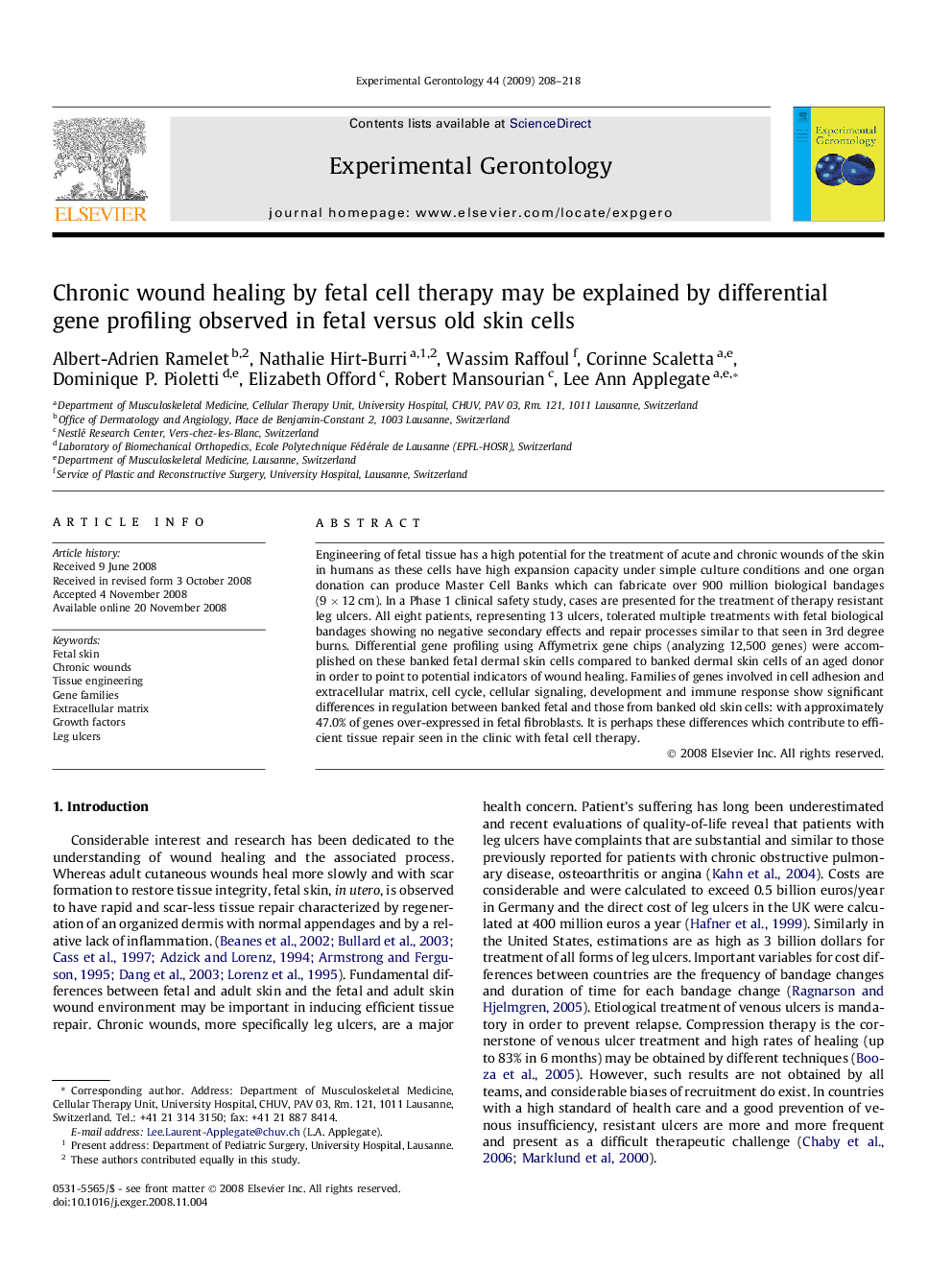| Article ID | Journal | Published Year | Pages | File Type |
|---|---|---|---|---|
| 1906666 | Experimental Gerontology | 2009 | 11 Pages |
Engineering of fetal tissue has a high potential for the treatment of acute and chronic wounds of the skin in humans as these cells have high expansion capacity under simple culture conditions and one organ donation can produce Master Cell Banks which can fabricate over 900 million biological bandages (9 × 12 cm). In a Phase 1 clinical safety study, cases are presented for the treatment of therapy resistant leg ulcers. All eight patients, representing 13 ulcers, tolerated multiple treatments with fetal biological bandages showing no negative secondary effects and repair processes similar to that seen in 3rd degree burns. Differential gene profiling using Affymetrix gene chips (analyzing 12,500 genes) were accomplished on these banked fetal dermal skin cells compared to banked dermal skin cells of an aged donor in order to point to potential indicators of wound healing. Families of genes involved in cell adhesion and extracellular matrix, cell cycle, cellular signaling, development and immune response show significant differences in regulation between banked fetal and those from banked old skin cells: with approximately 47.0% of genes over-expressed in fetal fibroblasts. It is perhaps these differences which contribute to efficient tissue repair seen in the clinic with fetal cell therapy.
